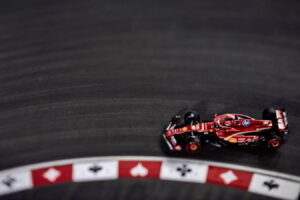It was a beautiful afternoon, Thursday, in Mooresville, North Carolina. So Ryan Blaney, with his quarantine mustache, stepped out of his house and spoke to the NASCAR media corp. over Zoom.
From a media perspective, it’s the first sign of a return to some semblance of normalcy. I say “some,” because the NASCAR Cup Series returns to action, Sunday, at Darlington Raceway with no practice or qualifying.
Challenges of racing with no practice or qualifying
With as engineering and simulation-heavy as NASCAR teams have become over the last decade, what challenges, if any, does going straight into race mode actually present?
According to Blaney, not that much.
“I think with all the simulation and technology we have nowadays, you go back and look at last year’s setup and cars and things like that,” he said. “It’s the same package we ran last year. So I feel like you can take that information and kind of transfer it over and say, ‘OK, this is how we started the race. This is how we ended the race, so let’s go somewhere in between.’ Or what you think you’re gonna go.”
He added that his crew chief, Todd Gordon, and his engineers at Team Penske have worked “really hard on the sim stuff,” since NASCAR announced on April 30 that the 2020 Cup Series season would resume on May 17.
“It’s not like back 20 years ago when there really wasn’t any of that, so I feel like you have a little bit better idea just from the technology side of kind of how you need to be,” Blaney said.
It reflects the greater emphasis teams have placed on engineering and simulations over the course of the last decade to build and prepare cars. Though the seeds for it were sewn as early as 1992, when Alan Kulwicki, who earned a bachelors of science in mechanical engineering, used his scientific approach to racing to win the 1992 Cup Series championship.
Now, instead of throwing stuff at the wall and seeing what sticks, as was the norm up to the 1990s, the cars are built to precise measurements. Thus, teams can, to a degree, compensate for the lack of practice time.
With that said, however, computers can’t account for everything.
“You never know what could happen as far as your setups, your track temp or your tires or things like that, but I feel like you can get it fairly close – you would hope at least – just because of all the technology and all the work that those guys have and just looking back at previous races and data and things like that,” Blaney said.
Sunday’s race is set for 3:30 p.m. ET and will be televised on FOX.






